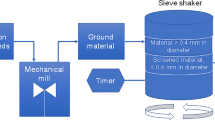Abstract
Malaysia’s oleochemical processing industry uses crude palm oil as the main source of process feedstocks. Physical–chemical treatment methods such as coagulation and flocculation processes are widely used to pre-treat oleochemical effluent followed by biological treatment to meet Standard A/B as required by the Department of Environment (DOE). Established chemicals that are used include aluminium sulphate and iron chloride as coagulants while the aluminium chloride, iron salts, and polyelectrolytes are used as flocculants. The industry is in constant effort to look into alternative chemicals that are friendly to both human and environment. Natural coagulants such as wheat germ and chitosan are proposed to treat the effluent. The investigations related to the removal rate of turbidity and chemical oxygen demand (COD) between natural and chemical coagulants were carried out. The effluent samples were analysed with the aluminium content. The results showed that the optimum dosage of wheat germ, chitosan, aluminium sulphate and iron chloride were: 2000, 20, 167 and 169 mg/L respectively. The turbidity reduction efficiency percentage using the wheat germ, chitosan, aluminium sulphate and iron chloride were reported at 80.2 ± 30.2, 78.8 ± 32.9, 96.2 ± 2.0 and 90.3 ± 3.9% respectively. The COD reduction efficiency by using wheat germ, chitosan, aluminium sulphate, and iron chloride were reported at 11.4 ± 5.8, 15.7 ± 6.6, 15.7 ± 3.1 and 15.9 ± 3.3% respectively. The findings showed that the effluent samples from natural coagulation process contains of lower aluminium concentration (0.1 ± 0.1 and 0.2 ± 0.1 mg/L) as compared to effluent samples from chemical coagulation process with the aluminium concentration of 2.4 ± 0.4 and 5.5 ± 0.3 mg/L. Thus, the use of wheat germ and chitosan are less hazardous to human health and environment.
Access this chapter
Tax calculation will be finalised at checkout
Purchases are for personal use only
Similar content being viewed by others
References
Chin K, Wong K (1981) Palm oil refinery wastes treatment. Water Res 15(9):1087–1092
Alshabab M, Andrianova M, Alsalloum D (2016) Modification of wastewater treatment technology at cottonseed oil plant. MATEC Web Conf 53:1040
Tabassum S, Zhang Y, Zhang Z (2015) An integrated method for palm oil mill effluent (POME) treatment for achieving zero liquid discharge—a pilot study. J Clean Prod 95:148–155
Hendrawati, Yuliastri I, Nurhasni, Rohaeti E, Effendi H, Darusman L (2016) The use of Moringa oleifera seed powder as coagulant to improve the quality of wastewater and ground water. IOP Conf Ser Earth Environ Sci 31:012033
Ko Y, Lee Y, Nam S (2007) Evaluation of a pilot scale dual media biological activated carbon process for drinking water. Korean J Chem Eng 24(2):253–260
Vara S (2012) Screening and evaluation of innate coagulants for water treatment: a sustainable approach. Int J Energy Environ Eng 3(1):29
Muisa N, Hoko Z, Chifamba P (2011) Impacts of alum residues from Morton Jaffray Water Works on water quality and fish, Harare, Zimbabwe. Phys Chem Earth Parts A/B/C 36(14–15):853–864
McLachlan D (1995) Aluminium and the risk for Alzheimer’s disease. Environmetrics 6:233–275
Bina B, Ebrahimi A, Hesami F (2014) The effectiveness of chitosan as coagulant aid in turbidity removal from water. Int J Environ Health Eng 3(1):8
Bouras (2003) Adsorptive properties of organophilic pillared clays: synthesis and characterization. PhD thesis, University of Limoges, France
Divakaran R, Sivasankara Pillai V (2002) Flocculation of river silt using chitosan. Water Res 36(9):2414–2418
Pontius FW (2016) Chitosan as a drinking water treatment coagulant. Am J Civ Eng 4(5):205
Zemmouri (2008) Use of chitosan as flocculant in water treatment. Magister thesis, National Polytechnic of Algiers
Nor Shazwani D, Tinia I, Mohd G, Intan SA (2014) Wheat germ as natural coagulant for treatment of palm oil mill effluent (POME). Int J Chem Environ Eng 5(2):111–115
Chung C, Selvarajoo A, Sethu V, Koyande A, Arputhan A, Lim Z (2018) Treatment of palm oil mill effluent (POME) by coagulation flocculation process using peanut–okra and wheat germ–okra. Clean Technol Environ Policy 20(9):1951–1970
Tchobanoglous G, Burton F, Stensel H (2014) Wastewater engineering. McGraw-Hill Higher Education, New York
Postnote (2002) Access to water in developing countries. Issue 178
Zemmouri H, Drouiche M, Sayeh A, Lounici H, Mameri N (2012) Coagulation flocculation test of Keddara’s water dam using chitosan and sulfate aluminium. Procedia Eng 33:254–260
Bina B, Mehdinejad MH, Nikaeen M, Movahedian Attar H (2009) Effectiveness of chitosan as natural coagulant aid in treating turbid waters. Iran J Environ Health Sci Eng 6(4):247–252
Davis M (2010) Water and wastewater engineering. McGraw-Hill, New York
Tri J, Dyah A, Catur P, Hanan LD (2016) Chitosan on reducing chemical oxygen demands in laundry waste water. Int J Sci Basic Appl Res 30(1):104–111
Kumar P, Prasad B, Chand S (2009) Treatment of desizing wastewater by catalytic thermal treatment and coagulation. J Hazard Mater 163(1):433–440
Rajan G, Nalladurai JD, Puthiya VN, Sreekrishnaperumal TR, Subramaniam K (2012) Use of combined coagulation-adsorption process as pretreatment of landfill leachate. Iran J Environ Health Sci Eng 10:1–7
Author information
Authors and Affiliations
Corresponding author
Editor information
Editors and Affiliations
Rights and permissions
Copyright information
© 2020 Springer Nature Switzerland AG
About this paper
Cite this paper
Choo, C.M., Tok, K.W., Teo, F.Y., Chong, C.H., Chok, V.S., Majid, M.F. (2020). Use of Wheat Germ and Chitosan as the Natural Coagulant in Oleochemical Wastewater Treatment. In: Mohamed Nazri, F. (eds) Proceedings of AICCE'19. AICCE 2019. Lecture Notes in Civil Engineering, vol 53. Springer, Cham. https://doi.org/10.1007/978-3-030-32816-0_56
Download citation
DOI: https://doi.org/10.1007/978-3-030-32816-0_56
Published:
Publisher Name: Springer, Cham
Print ISBN: 978-3-030-32815-3
Online ISBN: 978-3-030-32816-0
eBook Packages: EngineeringEngineering (R0)




